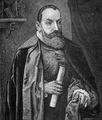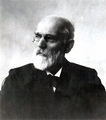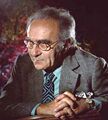Template:Selected anniversaries/August 22: Difference between revisions
No edit summary |
No edit summary |
||
| Line 7: | Line 7: | ||
||1771: Henry Maudslay born ... engineer. | ||1771: Henry Maudslay born ... engineer. | ||
||1787: Inventor John Fitch demonstrated his steamboat on the Delaware River to delegates of the Continental Congress. Its top speed was 3 mph. These tests were completed years before Fulton built his steamboat. Early in 1787, the Colombian Magazine described the steam engine design as “similar to the late improved steam engines in Europe,” with a horizontal twelve-inch cylinder. The piston was proposed to give “thirty strokes in a minute; which will give the axle tree about forty revolutions. Each revolution of the axle tree moves twelve oars five and a half feet. As six oars come out of the water, six more enter the water... The oars work perpendicularly and make a stroke similar to the paddle of a canoe.” | |||
||1796: Baden Powell born ... mathematician and Church of England priest. He held the Savilian Chair of Geometry at the University of Oxford from 1827 to 1860. Powell was a prominent liberal theologian who put forward advanced ideas about evolution. Pic. | ||1796: Baden Powell born ... mathematician and Church of England priest. He held the Savilian Chair of Geometry at the University of Oxford from 1827 to 1860. Powell was a prominent liberal theologian who put forward advanced ideas about evolution. Pic. | ||
| Line 47: | Line 49: | ||
||1933: Alexandros Kontoulis dies ... Greek general and diplomat. | ||1933: Alexandros Kontoulis dies ... Greek general and diplomat. | ||
||1939: The first U.S. patent for dispensing liquids under pressure from a disposable container was issued to Julius Seth Kahn of New York City (No. 2,170,531). The patent was titled "Apparatus For Mixing a Liquid With a Gas," but was the predecessor of the aerosol spray can. In this case, the patent more particularly specified a use for whipping cream "by discharging the cream and gas mixture through a constricted orifice." The cream could be contained in a common soda-pop glass bottle. Gas could be introduced at controlled pressure. An inexpensive valve discharged the whipped cream. Its use was extended to applications such as dispensing paints, pharmaceuticals and insecticides. | |||
||1940: Oliver Lodge dies ... physicist and academic. | ||1940: Oliver Lodge dies ... physicist and academic. | ||
||1945: Ida Henrietta Hyde dies ... physiologist known for developing a micro-electrode powerful enough to stimulate tissue chemically or electronically, yet small enough to inject or remove tissue from a cell. Pic. | ||1945: Ida Henrietta Hyde dies ... physiologist known for developing a micro-electrode powerful enough to stimulate tissue chemically or electronically, yet small enough to inject or remove tissue from a cell. Pic. | ||
||1950: The pile achieved criticality in the Brookhaven Graphite Research Reactor (BGRR), the world's first nuclear reactor dedicated to the peaceful applications of atomic energy. It was patterned after a successful reactor at Oak Ridge National Laboratory. The improved reactor design of the BGRR added facilities to accommodate research in medicine, biology, chemistry, physics and nuclear engineering. The reactor pile consisted of a 700-ton, 25-foot cube of graphite fueled by uranium, enclosed in a steel-lined, high-density, five-foot-thick concrete shield. A total of 1,369 fuel channels were available with roughly half in use at any given time. Reactor power was controlled by insertion and removal of boron steel control rods. | |||
||1953: The penal colony on Devil's Island is permanently closed. | ||1953: The penal colony on Devil's Island is permanently closed. | ||
Revision as of 20:32, 16 August 2018
1854: Poet Jan Kochanowski dies. He established poetic patterns which would become integral to the Polish literary language.
1919: Theoretical physicist and crime-fighter Johannes Diderik van der Waals publishes new class of Gnomon algorithm functions which detect and prevent crimes against mathematical constants based on the states of gases and liquids.
1920: Science fiction writer and screenwriter Ray Bradbury born. The New York Times will call Bradbury "the writer most responsible for bringing modern science fiction into the literary mainstream".
1943: Signed first edition of Janet Beta at ENIAC traded for freshly minted 1943 Eleanor Roosevelt dime.
1974: Mathematician, historian of science, theatre author, poet, and inventor Jacob Bronowski dies.
1975: Statistician and educator George E. P. Box publishes new class of Gnomon algorithm functions, based on time-series analysis and Bayesian inference, which detect and prevent crimes against mathematical constants.





